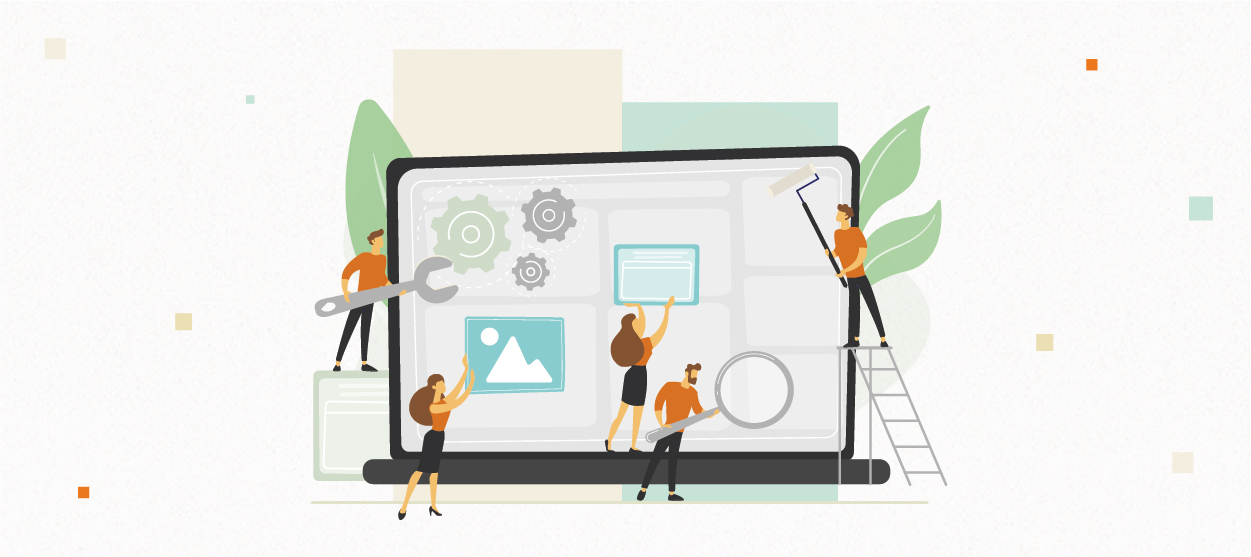The Next Frontier of Website Development Services in Dubai: Your Comprehensive Guide to Web 3.0

Web 3.0, the new iteration of World Wide Web, is being dubbed as the ‘future of the Internet’. The rise of blockchain technology and metaverse is set to further fuel its growth over the next few years. Let’s have an in-depth look into how Web 3.0 is evolving, how website development companies in Dubai are adapting, and in what ways are the third generation of web technologies transforming the internet.
How did the World Wide Web evolve?
Web 1.0 – Static Websites
The first version of the Internet is a “read-only web” where users could only view information from static web pages connected by hyperlinks. These websites were hosted on web servers managed by internet service providers (ISPs) or by free Internet hosting services.
Lacking interactive capabilities, these websites served like a digital encyclopedia which only allowed users to access data and read it. In terms of design, developers used tables and frames to align the components of a web page. Examples are basic homepages and online directories such as Netscape, Yahoo and Altavista.
Web 2.0 – Social Networks
The second generation of the Internet, which is what we use today, is called the social web. It enables users to interact on websites and applications and because of this, people can take advantage of tools such as blogging, podcasting, and tagging. Web 2.0 also led to the emergence of social networks where users can interact with each other and generate content such as Facebook, YouTube, and Twitter.
Website designs have also transformed considerably over the years. An innovative website design company in Dubai, for instance, makes use of programming languages such as CSS3, AJAX, JavaScript, and HTML5 for its developers to design complex layouts with user-friendly navigation.
One drawback in Web 2.0, however, is that personal data can be collected through individual profiles and browser cookies which can be sold to advertisers to be used for targeted advertising, resulting to data privacy concerns.
Web 3. 0 – The Future of the Internet
Web 3.0 is a decentralised web that will integrate with users and various systems to provide a more interactive, personalised, and secure user experience. It will be an integration of artificial intelligence, machine learning, AR/VR, and blockchain technology which will enable real-world human interactions and will allow users to have more control on the way their data is collected. To better understand what Web 3.0 is, let’s explore its distinctive characteristics in detail.
What Are the Unique Features of Web 3.0?
Decentralised
Web 3.0 will consist of web apps, called decentralized apps (DApps), which will not rely on one server or a cloud-based provider. Instead, they will be distributed across different servers on various devices. Integrated with blockchain technology, it will enable data to be securely stored simultaneously on a network of computers instead of centralised authorities such as Google, Apple, or Meta. This means users will not need to go through intermediaries to access and navigate the Internet. Their identity will no longer be connected to specific platforms and will have complete control of their data privacy and identity.
Leverages blockchain technology
Web 3.0 websites and apps will mostly rely on blockchain technology where user data is encrypted or is protected by an encryption code to make every transaction secure. In a blockchain network, users can convert their assets into a digital form or token (either NFTs or cryptocurrency) which can be traded across various networks through peer-to-peer interaction.
Trustless and permissionless
Web 3.0 is developed with open-source software built by a community of web developers to make it
accessible for all users. Thus, Web 3.0 is trustless and permissionless, which are both considered great advantages. This means, users can interact with other users without the need for a trusted third party. Also, people can directly access a network and participate in virtual transactions without being required to seek authorisation from a governing authority.
Semantic Web
Web 3.0 will only rely on the keywords that the user inputs. It will allow computers to also decode
the meaning behind the information while analysing it, whether it’s text, voice, or other forms of media. This will enable intelligent data communication, personalising the browsing experience and filtering the search results of every end user with high accuracy. Thus, it is important for businesses to choose a top SEO company in Dubai that can future-proof search engine rankings by using semantic SEO or creating optimised content that is focused not only on specific keywords but also on the context of topics.
Omnipresent
With the advent of the Internet of Things (IoT), internet connection will not be limited to just smartphones and computers. Instead, Web 3.0 can also be accessed from a wide variety of intelligent devices found in smart homes, offices, and transportation. This will make Web 3.0 “omnipresent” — being more accessible to everyone, anytime and anywhere.
Utilises artificial intelligence
Web 3.0 will make use of artificial intelligence (AI) to allow computers to process information like humans do. It will be capable of understanding user behavior and determine one’s interests, comprehend the connection of one information from another, and find what the user is searching for more quickly.
Features realistic graphics
The third-generation Internet will feature a realistic, 3D world to provide a high level of immersive experience. This will not only apply to virtual games but will also be implemented on websites and numerous services of diverse sectors such as e-commerce, tourism, and real estate.
We at 7G Media are extremely enthusiastic about emerging new technologies. Our team stays up to date with the latest trends of the digital world to develop effective marketing strategies and help brands to experience a whole new level of digital transformation.







